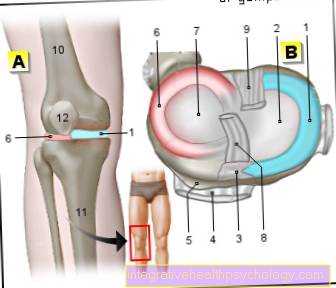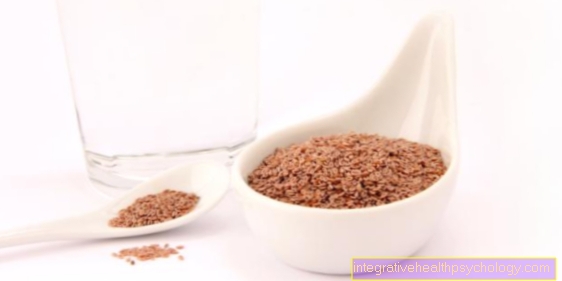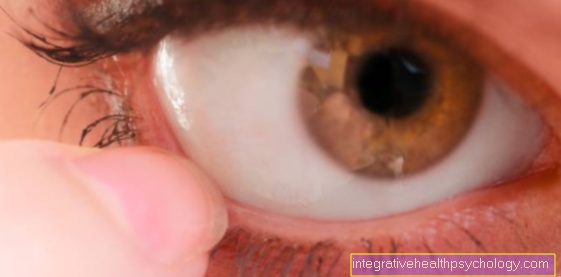Senile colpitis
definition
Senile colpitis is an acute inflammation of the vaginal mucosa and occurs mainly in women after the menopause (menopause).
On average, every woman will have a vaginal infection at least once in her life.
The frequency of inflammation increases with age due to the falling estrogen level.
The vaginal mucous membrane is made up of multilayered squamous epithelium and colonized by various lactic acid bacteria, which build up an acidic environment and form a natural defense barrier.

What are the causes?
The function and regeneration of the vaginal mucosa depends on the female sex hormone estrogen.
When the level of estrogen falls during menopause, the vaginal mucosa shrinks - it atrophies.
The squamous epithelium of the mucous membrane becomes permeable to fluid and dries out.
The lack of a barrier in the mucous membrane makes the tissue susceptible to infection.
Bacteria and fungi can easily penetrate the layers of the skin.
The inflammation is usually caused by several pathogens, but most of them are the bacterium Gardnerella vaginalis and various fungi.
Find out more about bacterial vaginosis at:
How contagious is bacterial vaginosis?
Concomitant symptoms
Patients report persistent local itching at the onset of colpitis.
The defective skin causes pain during urination and sexual intercourse.
However, the most important sign of infection is discharge from the vagina (fluorine vaginalis).
Depending on the bacterial flora, a distinction is made between yellowish-greenish (mixed infection) or whitish (fungi / Candida albicans) discharge.
In addition, there may be bleeding on contact.
If there is an infection with genital herpes, additional vesicles become visible.
Bleeding from the vagina
If the vaginal mucous membrane continues to dry out, manipulation can e.g. Mostly small bleeding occurs when inserting a tampon or during intercourse.
The resulting wounds serve as a breeding ground for bacteria and fungi.
How does the therapy work?
To avoid inflammation and further progression of atrophy (regression) of the mucous membrane, ointments and creams containing estrogen can be introduced into the vagina.
In order to restore the natural vaginal environment, lactic acid bacteria (lactobacteria) should also settle in the vagina.
Various products such as Vagiflor® available.
As a home remedy, yogurt can be introduced with the help of a tampon.
In addition, excessive washing with soaps should be reduced and sexual intercourse should be avoided during therapy.
If an infection has already occurred, antifungal (against fungi) or antibacterial (against bacteria) ointments or suppositories are used.
Depending on the bacterial colonization, the antibiotic metronidazole or clindamycin are available.
In addition, hydrocortisone or antiseptics can be used locally.
Depending on the infection, partner treatment may be necessary, as otherwise a ping-pong effect occurs.
If the course is very persistent, the medication may have to be taken orally (as a tablet).
This is how the diagnosis is made
The clinical picture of senile colpitis shows a blotchy reddening as well as dry spots that tear and bleed easily.
In addition, the pH value can be determined with a vaginal swab.
Normally it is in the strongly acidic range (pH 3.8-4.5), in old age the pH rises to the weakly acidic range pH> 5.5.
Lactic acid bacteria cannot survive in this environment and their natural defenses decline.
Bacteria and fungi can also be detected through the smear.
For some bacteria, such as Chlamydia, however, requires special swabs.
That is the prognosis
An infection can sometimes require lengthy therapy and must be treated consistently.
Then the prognosis is very good.
However, symptoms often flare up again after the medication is discontinued early and therapy must be intensified.
Restoring the natural vaginal flora is also a long process.
Women who have once had vaginitis are likely to have to deal with it again and again.





























